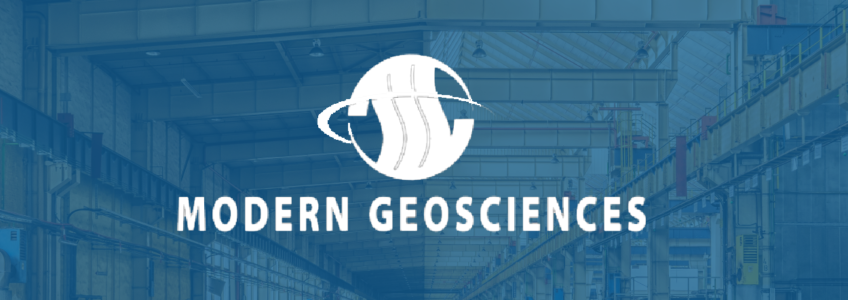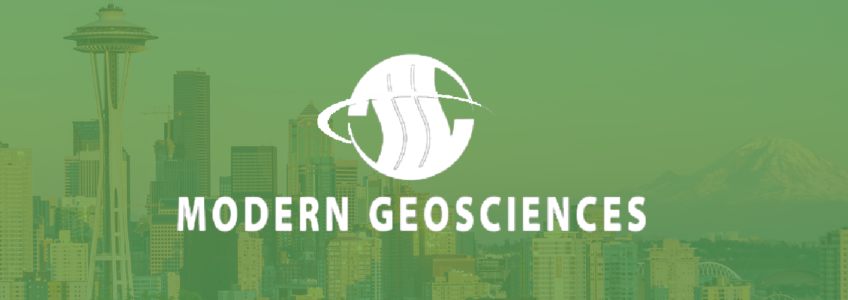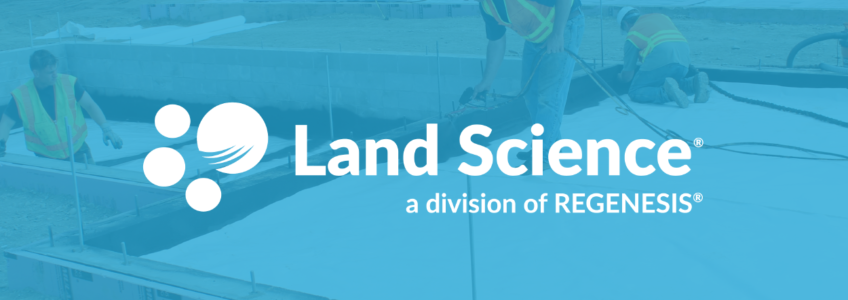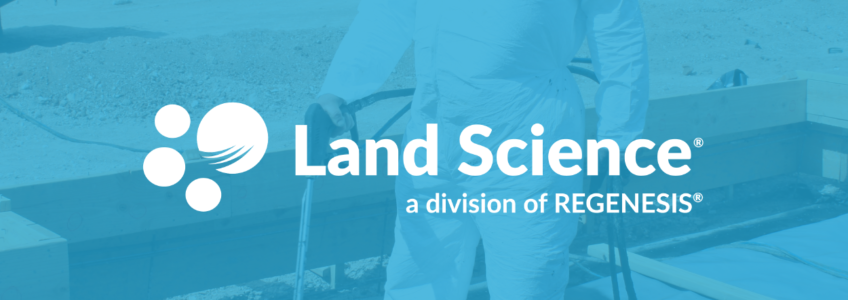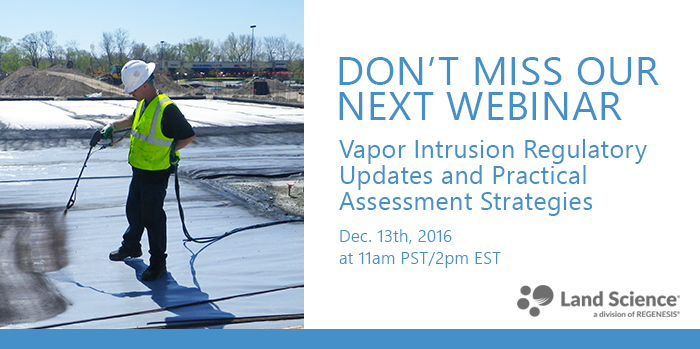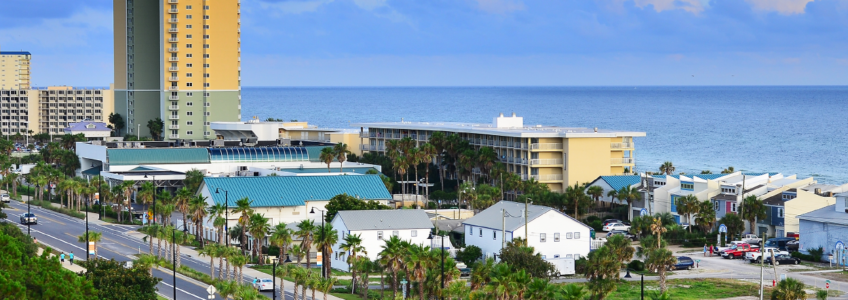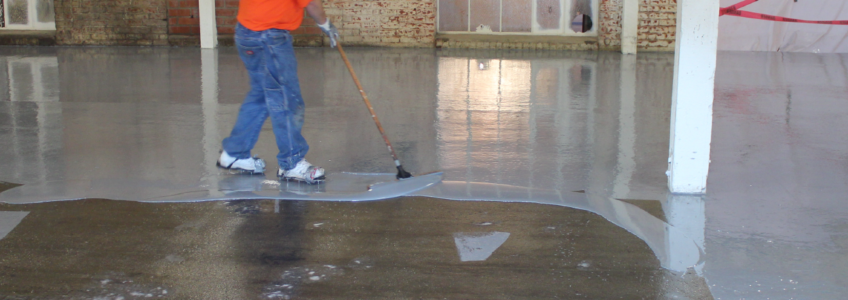Client Spotlight: Kenneth S. Tramm, PhD, PG, CHMM, Founder of Modern Geosciences
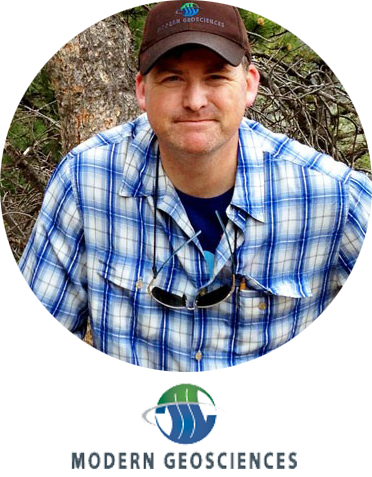 An accomplished environmental professional, an author with a passion for textbook writing, a talented guitar playing musician, an entrepreneur, and a self-proclaimed difference-maker for the environment – all of these facets describe Kenneth S. Tramm, PhD, PG, CHMM. Dr. Tramm is the founder and General Manager of Modern Geosciences, a leading provider of environmental solutions, and a trusted Land Science client. When Kenneth founded Modern Geosciences in 2011, his goal was to build an environmental firm with a talented staff, focused on delivering innovative environmental solutions for its clients. Suffice it to say, Kenneth and his firm, based in Colleyville, Texas, a suburb of Ft. Worth, is indeed delivering on his objective of providing cost-effective solutions to environmental challenges for clients spanning a number of industry sectors.
An accomplished environmental professional, an author with a passion for textbook writing, a talented guitar playing musician, an entrepreneur, and a self-proclaimed difference-maker for the environment – all of these facets describe Kenneth S. Tramm, PhD, PG, CHMM. Dr. Tramm is the founder and General Manager of Modern Geosciences, a leading provider of environmental solutions, and a trusted Land Science client. When Kenneth founded Modern Geosciences in 2011, his goal was to build an environmental firm with a talented staff, focused on delivering innovative environmental solutions for its clients. Suffice it to say, Kenneth and his firm, based in Colleyville, Texas, a suburb of Ft. Worth, is indeed delivering on his objective of providing cost-effective solutions to environmental challenges for clients spanning a number of industry sectors.
Dr. Tramm’s Background and Experience with Land Science
Kenneth’s interest in impacting environmental remediation began in high school, where he developed an interest in earth sciences. Shares Kenneth, “When I learned I could apply engineering and geologic principals to earth sciences, it was a natural. Then at Texas A&M University, I was lucky enough to find a new degree program that mixed engineering, geology, and physical sciences into a combined degree. This gave me a good start to grow on.” After completing his Bachelors of Science in Bioenvironmental Sciences, Kenneth went on to earn his Masters and Doctorate of Science degrees in Environmental Science and Engineering from the University of Texas at Arlington. Prior to launching Modern Geosciences, Kenneth worked as an Environmental Practice Leader, managing a variety of high-profile projects across the United States. When asked what he enjoys most about working with Land Science, Kenneth points to professional, collaborative team-work. “The Land Science technical staff are always helpful to bounce ideas off of”, says Kenneth. “We use several Land Science products in conjunction with traditional source removal and plume management. We do a great deal of Vapor Intrusion Control System (VICS) design, installation oversight and confirmatory testing. While we have used other products, Geo-Seal® has been a great off-the-shelf tool for us because it easily allows us to update our designs to better reflect permeation rates or specialty foundations our clients need.” Underscoring the success of Geo-Seal®, Kenneth points out that in some years his firm has specified over a million square feet, and that the product has great acceptance from both regulators and equity partners.
Beyond the Environmental Industry
While managing Modern Geosciences no doubt keeps him busy, Kenneth manages to find time for one of his favorite hobbies- playing the guitar, a passion that eventually blossomed into playing with a band while at Texas A&M, and even led to radio airtime and a phone call from legendary record label Epic Records. Continues Kenneth, “We had the chance to play some cool gigs and made it on the radio, but as they say… the difference between a large pizza and a musician is that a large pizza can feed a family of five!” He also stays busy donating his time to several charities and helping shape college coursework/professional mentoring at Texas A&M and the University of Texas at Arlington. “There is no better feeling than selflessly helping another person”, shares Kenneth. “I think the old adage from Winston Churchill of ‘we make a living by what we get, but we make a life by what we give’ says it best.” Married and with three children, he has also found time to author a textbook, Environmental Due Diligence: A Professional Handbook. Adds Kenneth, “It has been so cool to see it added to a lot of college curriculums. It’s a collection of all the things I wished I had access to when I was just starting out and learning.” True to his form of staying current with his work, Kenneth hopes to have the next edition out in 2018.
It needs to be 100%
Kenneth’s day-to-day responsibilities vary widely, and this variety is just one aspect of what he enjoys in his work. Shares Kenneth, “Simply put, I assist clients in problem solving. This could be designing an air compliance program one day, designing an investigation program for a refinery that was mothballed in the 1940s the next, or on another day, performing a building stress test to see if we can tackle vapor intrusion. In between the large and interesting projects are plenty of basic due diligence, remediation, and regulatory projects too. Each presents its own challenges and requires that you never underestimate what you are doing. I firmly believe if you are going to do anything, it needs to be 100%.” To stay current with the constant flow of information and best practices in environmental engineering, Kenneth and his staff participate in several in-house and professional training events throughout the year. He also serves as an adjunct faculty member at the University of Texas at Arlington’s Civil Engineering department, which requires him to stay updated on the various dynamics of his field.
Cleaning up Brownfields
When asked what he enjoys most about his work, Kenneth is quick to point out that making a difference by creating solutions that ensure safe reuse of brownfield properties is extremely gratifying. “I like to think we make a difference,” he says. “While sometimes it may seem like a small step, everything we do to assist another job being created, help a part of the earth be a little less polluted, or help a client manage environmental risk is rewarding. It is always fun to drive by old sites that have now been cleaned up, closed, and put back into use.” Although Modern Geosciences has enjoyed success, Kenneth still sees room for improvement, and true to his nature, is always looking to take his firm to the next level. Shares Kenneth, “I really want to focus on mentoring great people and doing great work. We need to keep our eyes on delivering cost-effective solutions and growing our client base through direct experience and testimonials. So far it seems to be working.” As for the future of the bioremediation industry as a whole, Kenneth sees innovation as a catalyst for even more effective treatment solutions. He concludes, “While we have some great basic tools for enhancing bioremediation, there are always new approaches and site-specific scenarios which require us to get creative. I am not sure there are trends to follow on this, but I do see more and more firms considering options today that were fringe ideas just a few years ago.”
Land Science is proud to have Dr. Kenneth Tramm, Principal and General Manager of Modern Geosciences, as a preferred client and partner in environmental remediation, and appreciates his leadership and comprehensive approach in providing successful remediation outcomes for Land Science and its clients.
Land Science Presents a Webinar with Dr. Kenneth Tramm on Vapor Intrusion’s Impact on Environmental Due Diligence Industry
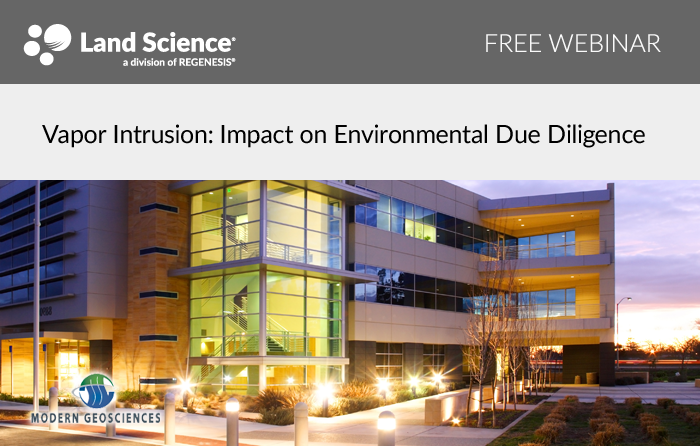
Land Science is pleased to present a webinar with Dr. Kenneth S. Tramm, a founding Principal with Texas-based engineering firm, Modern Geosciences. Dr. Tramm specializes in air quality monitoring, environmental due diligence, risk-based closures, and remediation design.
In this free webinar Dr. Tramm’s presentation will provide us with an update on how Vapor Intrusion is impacting the Environmental Due Diligence industry.
Joining Dr. Tramm will be Thomas Szocinski, Director of Vapor Intrusion at Land Science, who will review vapor intrusion mitigation solutions currently available, including Geo-Seal® Vapor Intrusion Barrier and Retro-Coat™ Vapor Intrusion Coating.
This webinar has already taken place.
About the Presenters
 Kenneth S. Tramm, PhD, PG, CHMM
Kenneth S. Tramm, PhD, PG, CHMM
Principal, Modern Geosciences
Dr. Tramm is a founding Principal with Modern Geosciences, a Texas-based engineering firm. His day-to-day work includes air quality monitoring, environmental due diligence, risk-based closures, and remediation design. Prior to founding Modern Geosciences he directed environmental due diligence for two international engineering firms with project experience in over 30 states and territories. He holds a masters and doctorate in Environmental Science and Engineering from the University of Texas at Arlington and a bachelors in Bioenvironmental Sciences from Texas A&M University. He is a licensed Professional Geoscientist in Texas and Louisiana, a Certified Hazardous Materials Manager, and adjunct professor in the UTA Civil Engineering department.
He is also the author of Environmental Due Diligence: A Professional Handbook which provides a comprehensive guide to the due diligence process. A second edition is in the works and hopefully will be out later this year. Dr. Tramm also currently serves on boards at UTA and Texas A&M helping to enhance curriculum for the next generation of Environmental Professionals.
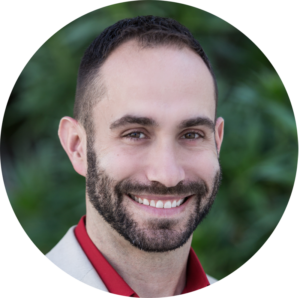 Thomas Szocinski, CEP
Thomas Szocinski, CEP
Director of Vapor Intrusion, Land Science
Thomas Szocinski is the Director of Vapor Intrusion of the Land Science® division of REGENESIS, Inc. In his role, Tom provides executive leadership, market strategy and sales support, while further strengthening relationships with state and federal regulators, applicators and environmental consultants. Tom is a nationally recognized vapor intrusion expert with over 14 years’ experience as an environmental scientist, focusing on vapor intrusion assessment and mitigation, remediation, site assessment, and Brownfield site management. He has served on both state and federal regulatory vapor intrusion review boards, assisting with development of vapor intrusion and mitigation guidance, regulations, and exposure criteria. He has designed and implemented numerous nationally recognized and award winning vapor mitigation systems across the United States for both private and government sites. Tom earned a Bachelor of Science degree from Lake Superior State University in Sault Ste. Marie, Michigan. Tom enjoys the outdoors from hunting and fishing, to hiking and camping with his wife and children.
Nick Mjolsness: Specializing in Helping You Mitigate Vapor Intrusion Risk
 Ask Nick Mjolsness, Central Region Manager at Land Science, what he enjoys most about his work and you’ll likely get a response that may leave you a bit envious. By combining travel to many states in the Midwestern US with a skill set that involves treating a wide range of contaminants, Nick is able to combine a hands-on approach to vapor intrusion mitigation while discovering the beauty and diversity of the central US. It’s this combination of travel and making a positive impact on our environment that makes him appreciate his profession. “It’s extremely rewarding to see an environmental project, such as vapor intrusion mitigation, come to fruition from inception to application,” shares Nick. “And I really enjoy traveling. You get a real appreciation for the size of the U.S. when you are visiting multiple states each month.”
Ask Nick Mjolsness, Central Region Manager at Land Science, what he enjoys most about his work and you’ll likely get a response that may leave you a bit envious. By combining travel to many states in the Midwestern US with a skill set that involves treating a wide range of contaminants, Nick is able to combine a hands-on approach to vapor intrusion mitigation while discovering the beauty and diversity of the central US. It’s this combination of travel and making a positive impact on our environment that makes him appreciate his profession. “It’s extremely rewarding to see an environmental project, such as vapor intrusion mitigation, come to fruition from inception to application,” shares Nick. “And I really enjoy traveling. You get a real appreciation for the size of the U.S. when you are visiting multiple states each month.”
Love for Travel and the Environment Leads Mjolsness to Land Science
Whether it’s discovering a new city or simply moving from point A to point B, Nick is always on the go, moving forward, and it’s one reason he chose to pursue a career in vapor intrusion mitigation. Continues Nick, “vapor intrusion mitigation is a dynamic field that is constantly evolving, and Land Science has developed a reputation for leading the way with regards to both science-based solutions and support services.” Nick started with Land Science just over two years ago as the South Central District Manager, and worked out of the company’s Dallas office. In October of this year he relocated back to the Chicago area, where he graduated from DePaul University. “I’m excited about returning to a part of the country where I grew up. It is a treat to be back in Chicago, however I’ll admit I sometimes miss the warmer weather of Dallas!”
Collaborating with Environmental Professionals is Especially Rewarding
When asked what’s especially rewarding about his work, Nick points to the gratification that stems from being involved in so many various stages of a project, usually from start to finish. He also enjoys the collaboration of working with various teams at both Land Science and REGENESIS. Nick continues, “I like being involved throughout an entire project. For instance, we did a project recently that was about 18 months in duration, from the time that I became involved. I was able to see the project evolve from the planning and spec phases, to bid phase, and finally to the installation phase. Along the way, I was able to take photographs of the site that we will potentially use in a case study next year. This entire process can be a very gratifying experience because you are able to see your projects materialize from the earliest stage and then be present when Geo-Seal is being applied as the solution.” Another aspect of his work he appreciates is when a project he’s worked on is selected for a case study. “Creating and sharing a case study allows the project to live on as a potential reference for other clients. Sharing what has been successful on a project can assist other clients with similar project challenges.”
Land Science Stands Apart with a Focus on Vapor Intrusion Mitigation Solutions
In the years since joining Land Science, Nick has noticed a shift in the market. One of these is the increased trend toward specialization. Nick continues, “Something unique that Land Science offers is an exclusive focus on vapor intrusion. This specialization helps us see trends in every aspect of VIM.” Nick points out that another trend includes a much more conservative approach to handling vapor intrusion. “Lenders, insurance agencies, developers, engineers, you name it- they all want to be sure they are doing as much as they can to effectively mitigate the VI threat. This is a major reason why they come to Land Science. Land Science has developed a reputation for being at the forefront of vapor intrusion mitigation and completing projects to the highest standards.”
With so much change occurring within the industry, and specifically in vapor intrusion mitigation, Nick realizes the importance of staying current on the latest trends, regulations, and products. This involves attending and speaking at technical conferences around the country. He recently gave a presentation on vapor intrusion mitigation at the West Virginia Brownfields Conference in Charleston, S.C. in September.
Mjolsness Enjoys Travel, Hiking and Museums
In his free time Nick enjoys traveling, hiking, and touring museums. Thus far he’s traveled to Dubai and Oman, as well as Sweden and Norway, where his ancestors originated. For museums, the Museum of Science and Industry in Chicago tops his list.
When asked what it means to work for Land Science, Nick quickly points to the caliber of talented co-workers and the opportunity to work with so many different teams. He concludes, “Working at REGENESIS and Land Science is a chance to work with some of the top people in our field. I also enjoy the highly collaborative approach that comes with working with customer service, sales, marketing, research and development, and the other departments.”
REGENESIS is pleased to have Nick Mjolsness, Great Lakes District Manager at Land Science, and values his experience and ability to manage so many different aspects of vapor intrusion mitigation.
Upcoming Vapor Intrusion Webinar with Dr. Blayne Hartman
Vapor Intrusion regulatory guidelines are rapidly changing. In order to offer our clients with the latest industry knowledge, we are pleased to present a webinar with vapor intrusion expert Dr. Blayne Hartman. During this webinar presentation, Dr. Hartman will discuss the latest in national regulatory changes along with practical assessment strategies for navigating the vapor intrusion pathway.
His discussion will include:
- The latest updates to national regulations on the vapor intrusion pathway
- Most recent pathway assessment issues
- Tips for choosing the proper investigatory approach
Thomas Szocinski, CEP, Director of Vapor Intrusion for Land Science, will also review vapor intrusion mitigation solutions offered, including Geo-Seal® Vapor Intrusion Barrier, Retro-Coat™ Vapor Intrusion Coating and Vapor Vent™ systems.
Click here to visit our registration page and sign up for this free webinar.
MassDEP Finalizes “Vapor Intrusion Guidance: Site Assessment, Mitigation, and Closure”

The Massachusetts Department of Environmental Protection (MassDEP) finalized their Vapor Intrusion Guidance: Site Assessment, Mitigation, and Closure document on October 14, 2016. As stated from the guidance, “This document provides guidance on investigating, assessing, understanding, and mitigating vapor intrusion at disposal sites regulated under Massachusetts General Law, chapter 21E and the Massachusetts Contingency Plan.”
The vapor intrusion guidance was in draft form since October 2014 and went through a lengthy public review process prior to it being finalized. For the most part, there were no substantial changes from the public comment draft version of 2014 to the final guidance; however, there were numerous changes in terminology and clarifications on various items throughout each section.
Wondering how this might affect your site or your remediation plans? Land Science® can assist with providing some of the insight into the new guidance document. Contact Land Science, we have a team dedicated to vapor intrusion and mitigation solutions.
Have other vapor intrusion or mitigation questions? Land Science’s team is always available to assist. In addition, you can visit the Land Science’s Resource Page for industry resource links to each state agency, vapor intrusion guidance, as well as national and federal guidance documents.
PADEP Updates VI Guidance for First Time Since 2004
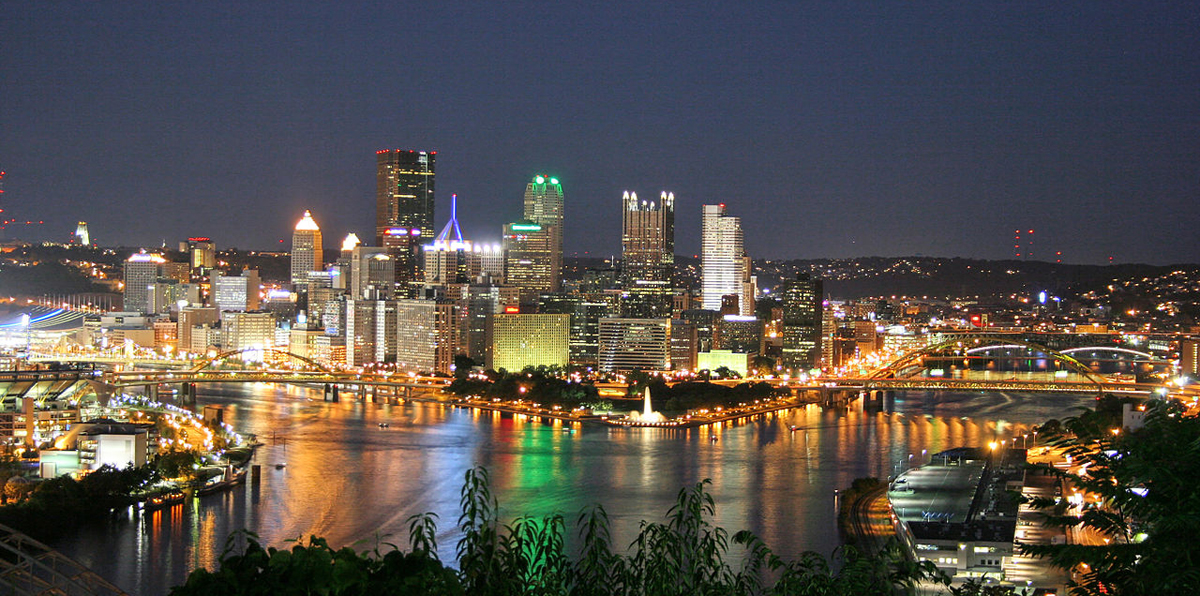
Pennsylvania’s Department of Environmental Protection (PADEP) issued the “Land Recycling Program Technical Guidance Manual for Vapor Intrusion into Buildings from Groundwater and Soil under Act 2” this summer and the document will become final in November 2016. This 103-page Technical Guidance Manual outlines significant changes and replaces the original Technical Guidance Manual dated January 24, 2004.
As this is the first substantial change to the guidance in over twelve years, it is important to understand changes and how they might affect your site or remediation plan. Some of the key changes to the guidance include VOC mitigation requirements, soil and groundwater screening levels and methods, and vapor intrusion modeling guidance.
A full version of PADEP’s guidance document can be found at the Land Science’s Resource Page, as well as other national and federal guidance documents and other state guidances. Have additional questions? Contact Land Science, we have a team dedicated to vapor intrusion and mitigation solutions.
California DTSC Updates PCE Screening Levels
California has issued revised screening levels (SL) for vapor-phase tetrachloroethylene (PCE). On September 8, 2016, California’s Office of Environmental Health Hazard Assessment (OEHHA) adopted an updated inhalation {Cancer} unit risk (IUR) factor for tetrachloroethylene (PCE). Updating the IUR also created revised recommended residential and commercial/industrial ambient air and soil gas screening levels (SL) for PCE. The Department of Toxic Substances Control’s (DTSC’s) revised PCE SLs are slightly more conservative than previous and remain below the United States Environmental Protection Agency (USEPA) SL for PCE. The USEPA’s SL are higher due to the use of a less conservative IUR (2.6E-07) than DTSC’s (6.1E-06) to derive its current SL; however, the USEPA acknowledges that the general IUR should not be used in all cases for evaluations and that “A number of uncertainties underlie the cancer unit risk for PCE…” Learn more by downloading the US EPA’s Chemical Assessment Summary of PCE here.
Below is a table of the former and revised DTSC SL’s.
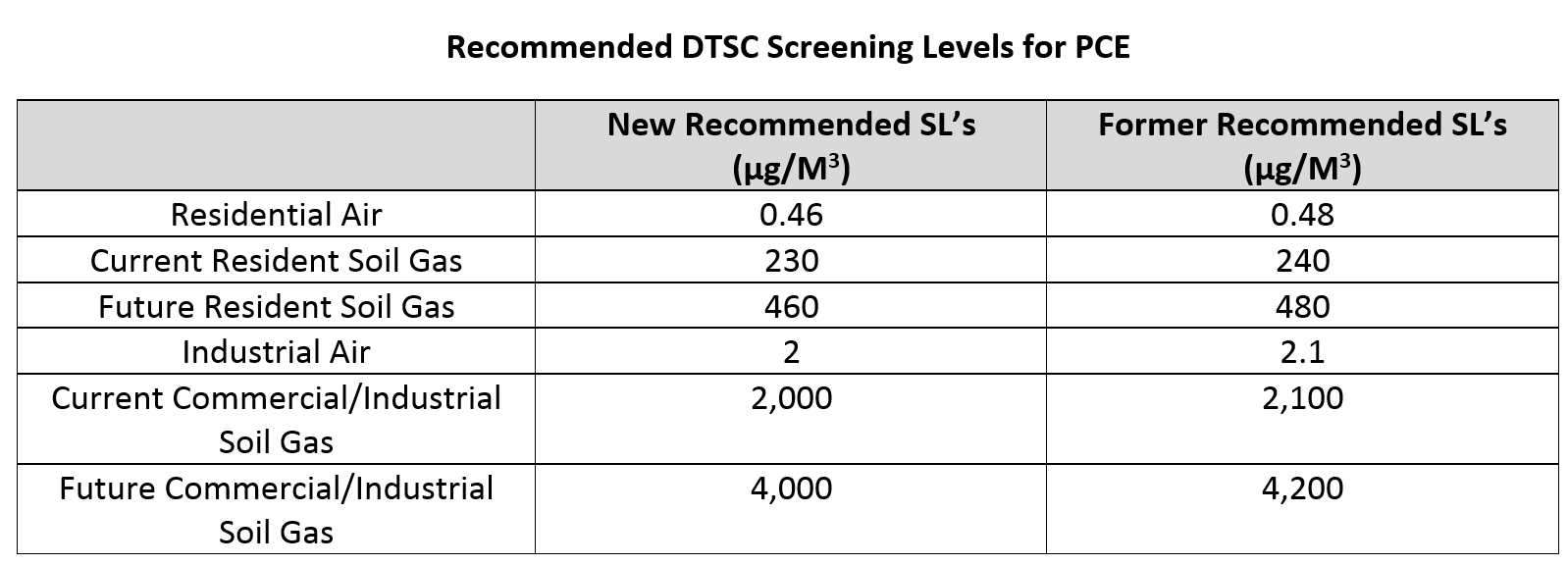
On October 17, 2016, California’s DTSC Human and Ecological Risk Office (HERO) issued a response to inquiries associated with the PCE revised IUR and SL. Refer to this memorandum for further details associated with the updated IUR and SL’s. These SLs should be used in conjunction with the June 2016 Human Health Risk Assessment (HHRA) Note 3. DTSC indicates that a subsequent update to the HHRA Note 3 will be issued December 2016/January 2017, which will include the changes to the PCE toxicity criteria.
The exposure and risk factors for PCE and other chlorinated constituents, within the vapor phase, continue to be at the forefront of many regulatory agency mandated updates and often generate several topics of discussion. The overall trend continues to be conservative when evaluating the risk of these constituents. Ultimately, directing many site evaluations towards pre-emptive mitigation approaches, such as vapor intrusion are highly recommended to comply with increasing regulatory guidelines. Have further questions? Contact Land Science as our team of scientists and engineers are dedicated to vapor intrusion and mitigation related issues and developing solutions for sites across the US.
Retro-Coat™ a New Approach to Mitigating Vapor Intrusion at Brownfield Sites with Existing Structures
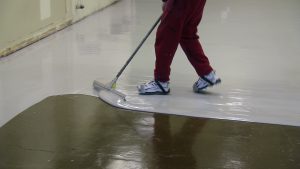
Recently, at the Eighth International Conference on Remediation of Chlorinated and Recalcitrant Compounds, organized and presented by Battelle, Dr. Ben Mork, the Director of Research and Development at Land Science Technologies (LST), a Division of REGENESIS, Inc. delivered a formal “Technologies for Tomorrow” luncheon presentation which included subject matter on a new vapor intrusion mitigation product called Retro-Coat™. This new technology is part of a suite of successful vapor intrusion solutions, including the widely used vapor intrusion barrier Geo-Seal®, offered by LST and designed for use on a range of contaminated properties including brownfields.
Retro-Coat is a new, specially formulated concrete coating developed to mitigate vapor intrusion in existing structures. The Retro-Coat material is highly effective in mitigating potentially harmful contaminant vapors resulting from chlorinated solvents and/or petroleum hydrocarbons in groundwater or soil environments. During the presentation, Dr. Mork went into great detail regarding the research and development process, including the new long-term chemical resistance and testing methodologies developed by LST to document the effectiveness of the Retro-Coat material. He also mentioned that more information will be available regarding the details and testing of Retro-Coat in a forthcoming white paper due out later this summer.
Looking beyond the testing and application, Peter Grant, Division Manager for Land Science Technologies, added, “Vapor intrusion represents a lot of uncertainty for building owners. Retro-Coat provides a simple and proven solution to a complex problem. Implementing Retro-Coat can reduce site characterization cost, building mitigation cost and provide the building owner with greater long-term assurance and flexibility in successfully mitigating their vapor intrusion risk.”
For more information about Retro-Coat please contact your Land Science Technologies Representative Directly at 949-481-8118.


